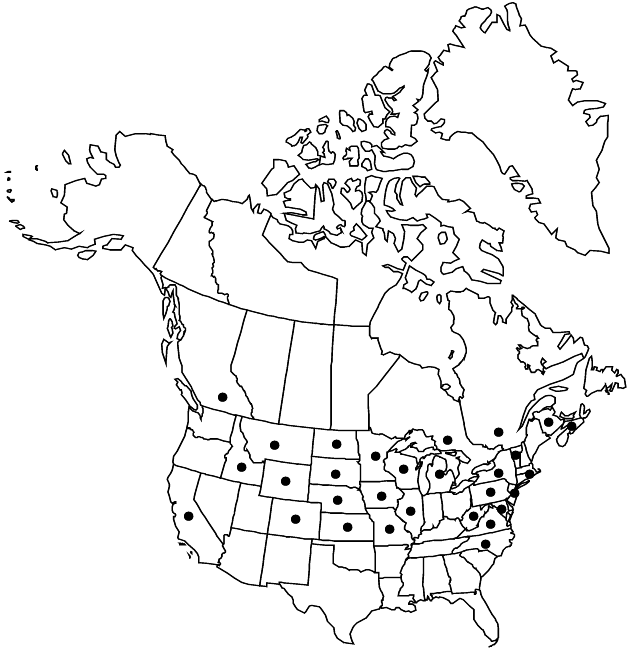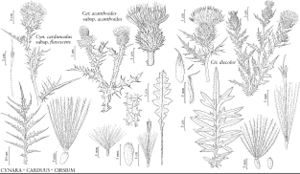Difference between revisions of "Carduus acanthoides subsp. acanthoides"
FNA>Volume Importer |
FNA>Volume Importer |
Revision as of 18:37, 24 September 2019
Annuals or biennials, 30–200(–400) cm. Stems openly branching, villous with curled, septate hairs to nearly glabrous, teeth of wings to 1.5 cm, wing spines to 8 mm. Leaves: basal 10–30 cm, tapering to winged petioles, margins spiny toothed to deeply 1–2×-pinnately divided; cauline sessile, gradually smaller; marginal spines to 5 mm; abaxial leaf faces glabrate except for long, curled, septate hairs along veins; adaxial faces sparsely hairy or glabrate. Heads borne singly or in corymbiform arrays of 2–5, sometimes also in upper axils, 18–25 mm. Peduncles spiny- winged throughout, to 4(–10) cm. Involucres hemispheric, 14–20 × 10–25 mm. Phyllaries linear to narrowly lanceolate, outer and middle with appressed bases 1–1.5 mm wide and appressed to spreading appendages 0.5–1 mm wide, distally glabrous or minutely ciliolate, spine tips 1–2 mm, the inner phyllaries with unarmed, straight or twisted tips. Corollas purple or ± white, 13–20 mm. Cypselae golden to brown, 2.5–3 mm; pappus bristles 11–13 mm. 2n = 22.
Phenology: Flowering summer–early fall (Jun–Oct).
Habitat: Aggressive weed of waste ground, pastures, roadsides, fields
Elevation: 0–3000 m
Distribution

B.C., N.B., N.S., Ont., Que., Calif., Colo., Idaho, Ill., Iowa, Kans., Md., Mich., Minn., Mo., Mont., Nebr., N.J., N.Y., N.C., N.Dak., Pa., R.I., S.Dak., Vt., Va., W.Va., Wis., Wyo., Eurasia.
Discussion
Carduus acanthoides has been reported as growing in Connecticut, Delaware, Kentucky, Massachusetts, Maine, Ohio, Oklahoma, Texas, and Washington; I have not seen specimens from those states. It was collected only once in New Brunswick in 1992.
Carduus acanthoides is a serious weed in pasturelands, where it displaces and suppresses growth of other plants and limits access of grazing animals to more palatable plants (A. M. Desrochers et al. 1988). It sometimes grows in dense stands.
Selected References
None.
